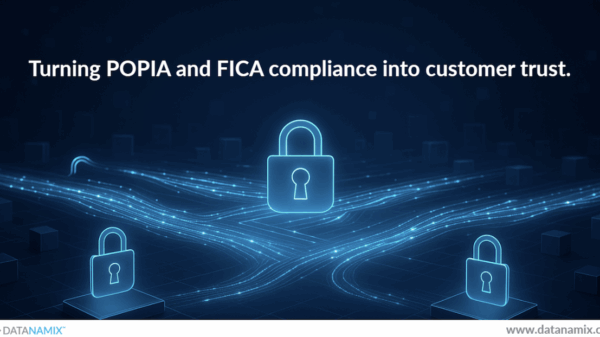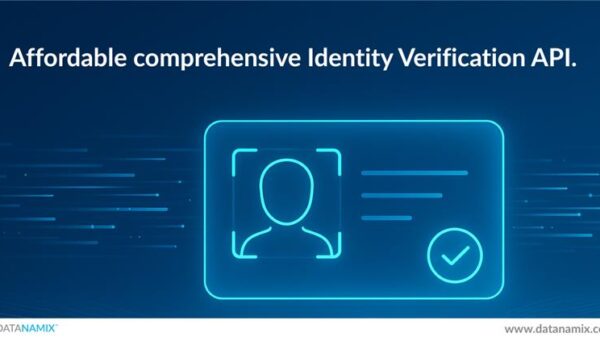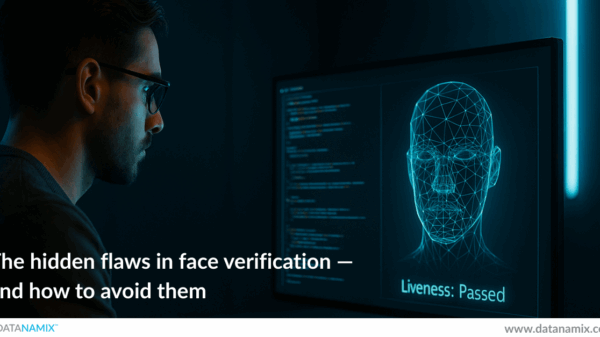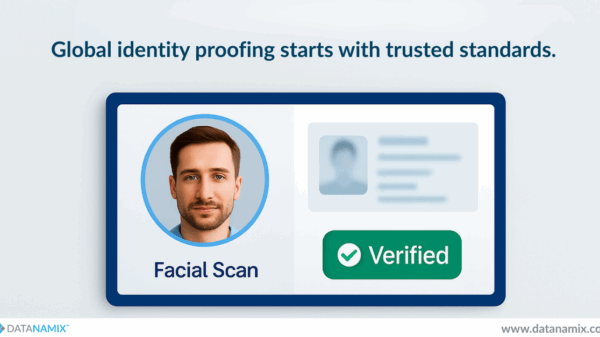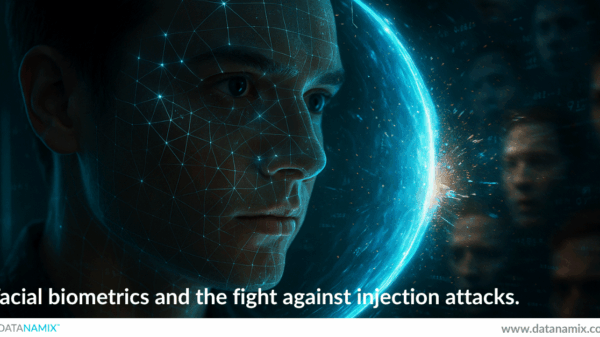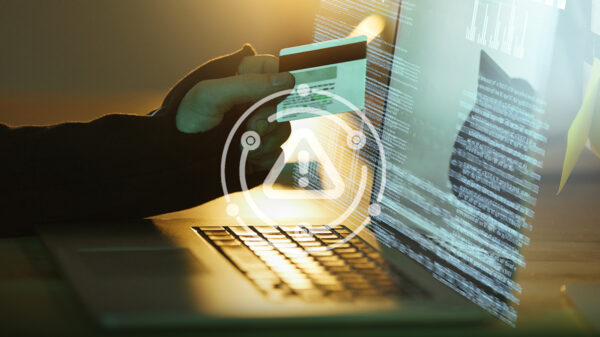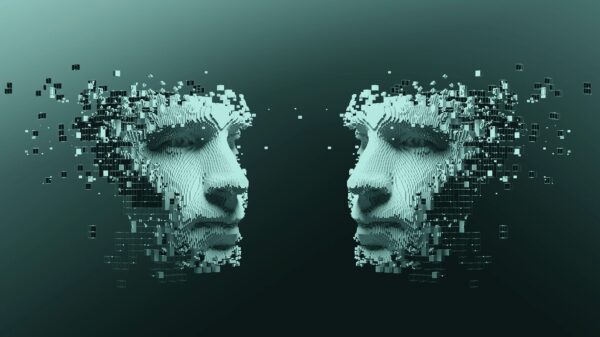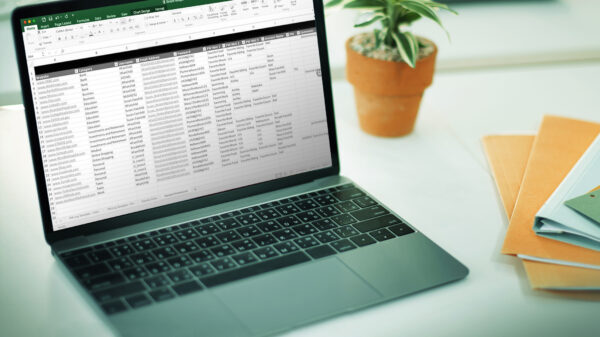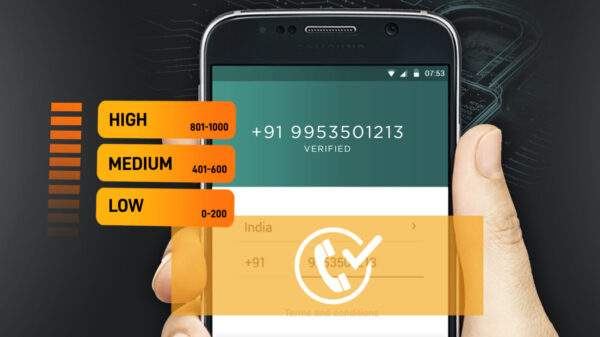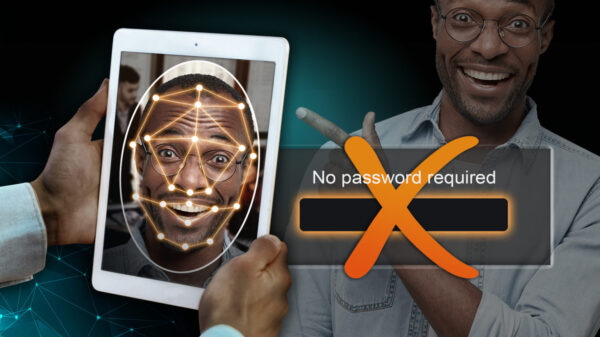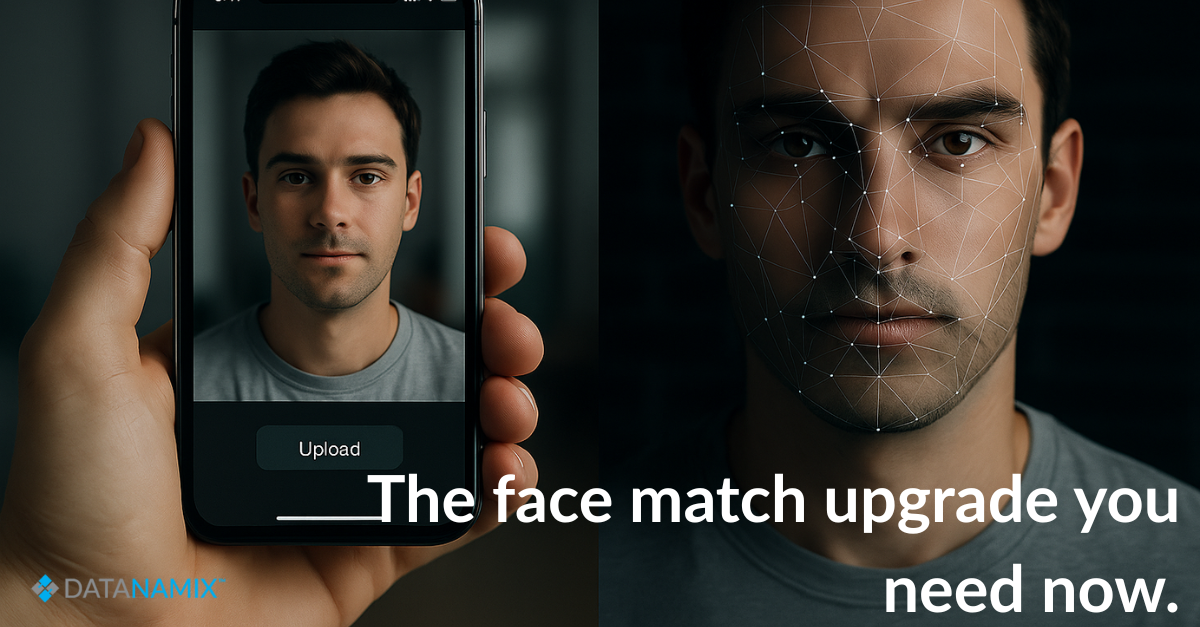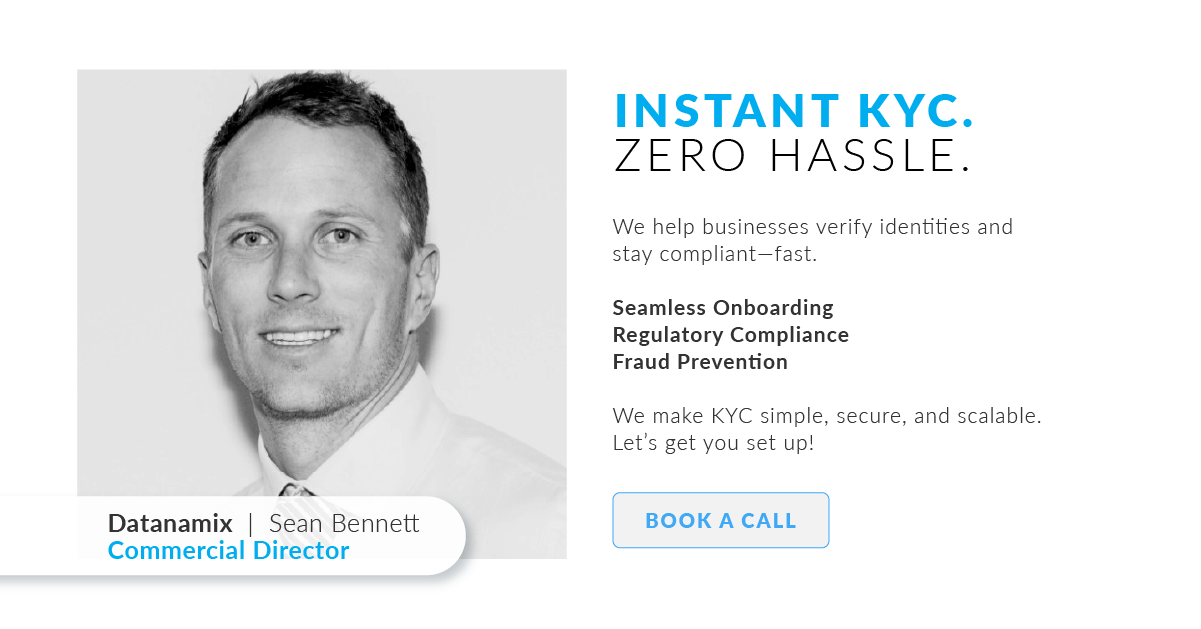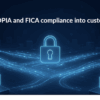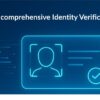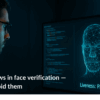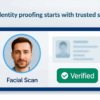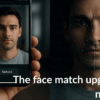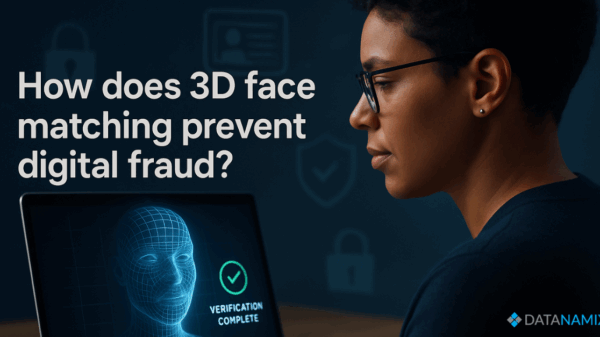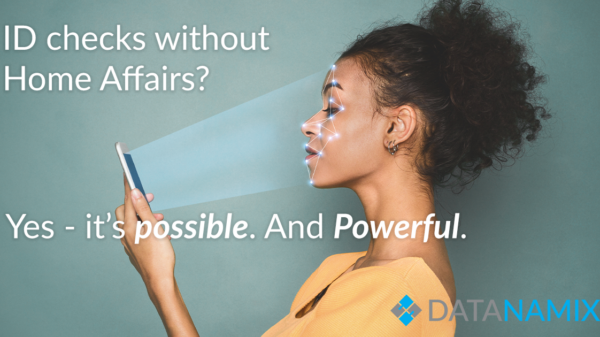3D and 2D face matching are two of the most talked-about identity verification technologies on the market, but understanding the difference could be the key to protecting your business. As 3D and 2D face matching become more common in digital onboarding, fraud prevention, and compliance workflows, the stakes are rising. More businesses are using biometric tools, but not all face match systems offer the same protection.
In fact, choosing the wrong one can leave your company exposed. The difference between 3D and 2D face matching often lies in what you can’t see: depth, liveness, spoof resistance, and certification. So, before you integrate or upgrade, let’s break down 3D and 2D face matching and why it matters for your business.
3D and 2D face matching: What’s the core difference?
At its simplest, the difference between 3D and 2D face matching is depth. 2D face matching uses a flat image, like a selfie or ID photo, to compare one picture to another. 3D face matching, on the other hand, captures depth, contour, and movement to detect whether a real human is present.
3D and 2D face matching may sound similar, but they perform very differently when it comes to fraud detection. 2D systems can be fooled by high-quality photos, videos, or even masks. 3D systems use liveness detection and infrared scanning to prevent spoofing. If you want to stop deepfakes and impersonation attempts, 3D face matching is the smarter defence.
2D systems can be fooled by high-quality photos, videos, or even masks. 3D systems use liveness detection and infrared scanning to prevent spoofing.
Why 3D and 2D face matching matter for digital onboarding
In digital onboarding, the stakes are high. You need to know your customer (KYC), verify their identity, and do it fast. This is where 3D and 2D face matching play different roles.
2D face matching is fast and lightweight. It works with basic cameras and can be embedded into mobile apps with ease. But it doesn’t guarantee that the person behind the screen is real; fraudsters can easily upload a stolen selfie or a manipulated image.
3D face matching, however, uses a live scan. It asks the user to move their head, blink, or follow a visual prompt. These gestures prove liveness and create a depth profile. That means businesses using 3D and 2D face matching side by side will see far fewer false positives, better fraud prevention, and higher confidence in their onboarding results.
How 3D and 2D face matching handle spoof attacks
Spoofing is when fraudsters use fake photos, videos, or masks to impersonate someone. It’s one of the fastest-growing threats in digital identity. And this is where the gap between 3D and 2D face matching becomes crystal clear.
2D face matching cannot reliably detect spoofing. A printed photo or looping video might pass the check. But 3D face matching has built-in spoof detection. It recognises depth and movement and can instantly reject non-human materials like silicone masks or screen replays.
2D face matching cannot reliably detect spoofing. A printed photo or looping video might pass the check. But 3D face matching has built-in spoof detection. It recognises depth and movement and can instantly reject non-human materials like silicone masks or screen replays.
A major fraud case in Brazil recently highlighted this. Criminals used leaked selfies and spoofed images to authorise fraudulent loans through the country’s national pension system. 2D face matching failed. In response, the Brazilian government suspended all new pension loans until biometric face recognition was made mandatory. 3D face matching would have flagged the attack immediately — protecting victims and stopping the scam.
If you’re evaluating 3D and 2D face matching, this kind of real-world result should guide your choice.
The role of certification in 3D and 2D face matching
Certification matters, especially in industries where compliance is non-negotiable. And not all technologies are created equal when it comes to standards. When comparing 3D and 2D face matching, you need to ask: Is it ISO/IEC 30107-3 certified?
3D face matching providers like FaceTec have passed rigorous international testing for presentation attack detection (PAD). This means the system has been stress-tested against fake faces, spoofing attacks, and extreme conditions and still performed with over 99.9% accuracy.
2D face matching, while useful, often doesn’t meet the same bar. It may help with basic identity confirmation, but if you’re in financial services, insurance, or any regulated sector, relying only on 2D could leave you non-compliant.
Datanamix offers both 3D and 2D face matching, but helps clients choose the right one based on their regulatory and fraud risk profile.
Why Datanamix supports both 3D and 2D face matching
At Datanamix, we understand that businesses have different risk thresholds. That’s why we offer both 3D and 2D face matching and help clients understand when to use each.
- 2D face matching is ideal for low-risk, high-volume scenarios. Think of marketing campaigns, pre-verification checks, or user experience flows where friction must be minimal.
- 3D face matching is ideal for high-value transactions, cross-border onboarding, or sectors with serious fraud exposure.
We also support tiered identity verification journeys. You can start with 2D face matching, and escalate to 3D if fraud risk is detected. This gives your business flexibility, speed, and smart fraud defence without sacrificing compliance or customer experience.
What makes 3D and 2D face matching different in performance?
When comparing 3D and 2D face matching, performance metrics matter. 3D face matching has higher accuracy, better spoof resistance, and fewer false accepts. It can detect subtle differences in facial geometry, skin texture, and motion cues that 2D systems simply miss.
2D face matching is quicker to deploy and more accessible, especially for mobile-first markets. But the trade-off is higher vulnerability. Side-by-side testing has shown that 3D and 2D face matching deliver very different results under pressure. Businesses using only 2D often report higher false match rates, leading to customer frustration and fraud exposure.
If trust, compliance, and fraud prevention are priorities, then 3D face matching is the stronger choice. If cost and speed are the drivers, 2D may be a good fit, but only with clear limits.
The cost difference between 3D and 2D face matching
Let’s talk numbers. Yes, 3D face matching can cost more than 2D face matching, but the return on investment is higher. Every fraud prevented saves money, time, and reputational damage. Every compliant verification avoids penalties and audit issues.
2D face matching is cheaper, making it attractive for startups or low-risk use cases. But relying on it in high-risk workflows can cost you more in the long run. That’s why Datanamix advises clients to weigh not just the cost of the tech, but the cost of getting it wrong.
By offering both 3D and 2D face matching, we help businesses find their balance between budget and risk. And with Profile ID and Profile Plus layered in, we provide more than just biometrics. We deliver full-stack, regulation-aligned identity intelligence.
When to choose 3D vs 2D face matching
If you’re still unsure how to choose between 3D and 2D face matching, here’s a simple rule of thumb:
- Use 3D face matching when onboarding customers remotely, handling sensitive transactions, or verifying foreign nationals.
- Use 2D face matching for basic checks, app flows, or when fraud risk is low and speed is everything.
And when in doubt, use both. Datanamix helps clients tier their identity strategies. With our help, 3D and 2D face matching become part of a smarter fraud prevention framework, not a tech decision in isolation.
Conclusion: The real difference between 3D and 2D face matching
Understanding the difference between 3D and 2D face matching could mean the difference between a secure platform and a breached one.
3D face matching offers
- proof of life
- depth, and
- ISO-certified security
2D face matching offers
- Speed
- simplicity, and
- basic visual confirmation
Both have their place, but they’re not interchangeable.
If you’re building digital onboarding journeys, fighting fraud, or staying compliant in a regulated industry, now is the time to evaluate your face match strategy.
At Datanamix, we partner with long-standing, highly reputable industry leaders like FaceTec to bring the best of both 3D and 2D face matching to our clients, with the intelligence and flexibility to match your real-world risk.
Need help choosing the right face match for your business?
Book a strategy call with Datanamix and let’s build a smarter, safer verification flow together.
REFERENCES:
- Privalogy – The fraud that fooled facial recognition: The case that reveals the limits of biometrics
- SigniFlow – 3D Liveness Identity Authentication

